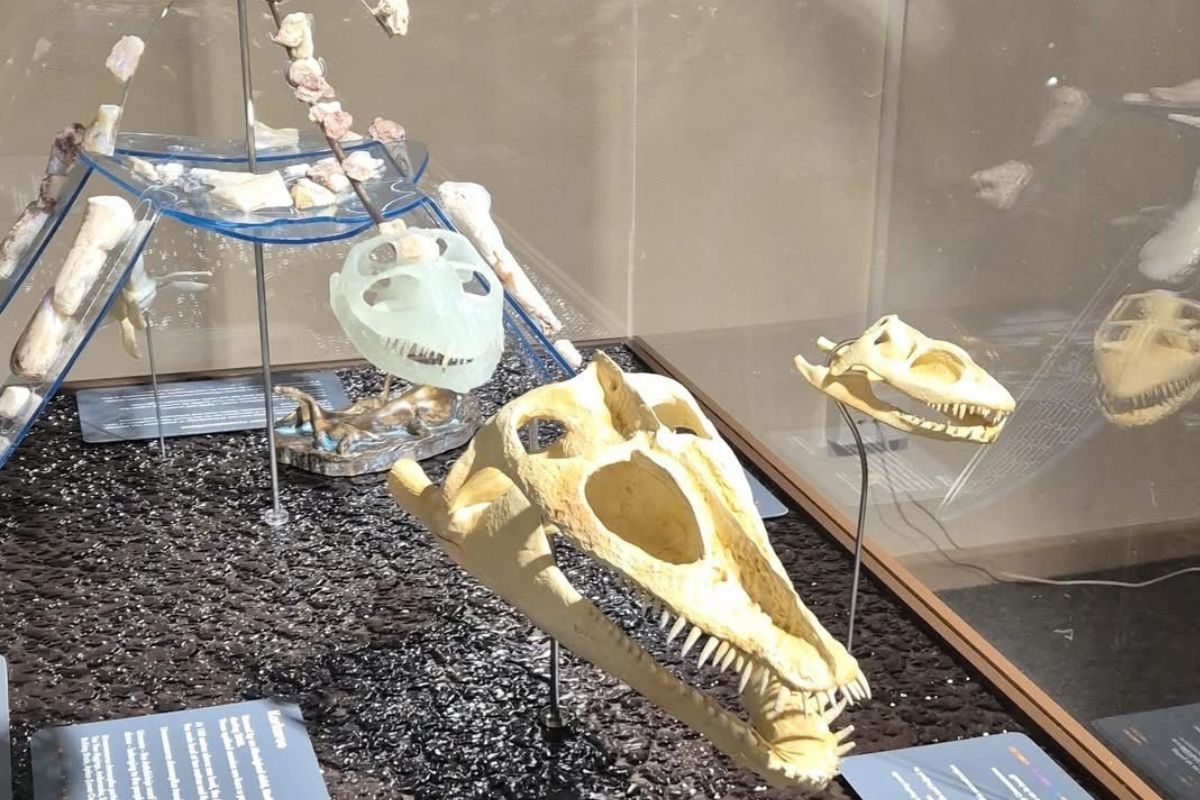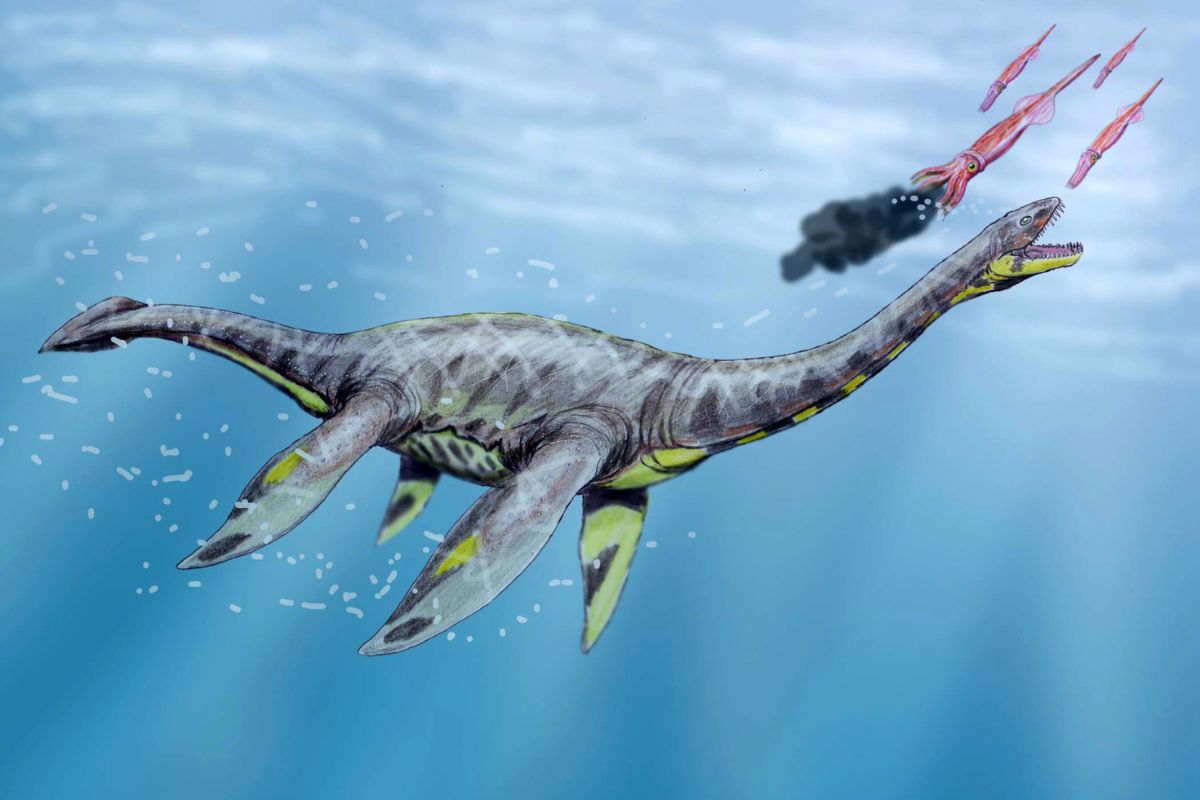Andamooka’s 110 million-year-old fossil in mint condition
An incredibly rare fossilised plesiosaur is back in its opal-mining home town after extensive restoration work at the South Australian Museum.

Known as Karkaroo, the juvenile plesiosaur fossil dates back 110 million years and is part of a long line of fossils unearthed in Andamooka.
Karkaroo – meaning colour to signify its opalised bones – was first discovered in October 2016 at the Tea Tree opal field at a depth of 8.5 metres and offers a rare glimpse of inland seas that once covered outback South Australia millions of years ago.
South Australian Museum 3D Design Manager Jo Bain oversaw the two-year plesiosaur restoration project, with Karkaroo the ninth plesiosaur he had restored.
“This one has been a bit of a treat to work on because it’s just so beautifully preserved,” he said.
“I had the privilege of having this in my possession for the last two years and when you look at it in the sun it’s absolutely extraordinary.”
Karkaroo measures at an approximate 700 millimetres long and is believed to be a newborn or baby plesiosaur that died shortly after birth.
The two-year restoration process included using miniature sandblasters to remove adherent rock and then applying acrylic resin to preserve the opal fossil.
You might like
“I received several bags of essentially just gravel with opal mixed in with it which took probably about a year to find all the fragments that I used in the end,” Bain said.
“The most interesting thing I found in the bags was a single tooth about four millimetres long and half a millimetre wide, it’s really rare to get teeth from baby fossils.”

Andamooka was once part of the Eromanga Sea which covered large parts of inland Australia during the Cretaceous period.
“Central Australia had this cold sea which had icebergs floating around and plesiosaurs swimming in the water,” Bain said.
“The oceans looked to be birthing grounds for plesiosaurs so the majority of plesiosaur fossils we find are babies — everywhere else in the world they tend to find adults whereas we get the opposite.
“The specimens have been preserved at the bottom of the frozen ocean and had their bones replaced by opal, so you end up with these gorgeous specimens.”
Bain said it was “lucky” that those who discovered Karkaroo recognised its value as a skeleton.
Stay informed, daily
“It could have quite easily been cut up and turned into jewellery and would have been lost forever.”
Bain welcomed Karkaroo’s return to Andamooka where it was first discovered.
“You can go to Andamooka and see specimens from Andamooka instead of them being tucked away in a museum overseas or in Adelaide — it’s what makes it special.”
Karkaroo is displayed at the Andamooka Opal Showroom Underground Opal & Mineral Museum and co-owner Peter Taubers said the return of Karkaroo represented “the heart of what makes Andamooka so special”.
“We’re incredibly proud to see this rare opalised fossil restored and back where it belongs, in the town where it was discovered,” he said.

Chair of the Andamooka Opal Fields Tourism Association Leila Day said Andamooka had the highest calibre fossils found in the world.
“From dinosaurs like Kakuru kujani to marine reptiles like Karkaroo, Andamooka continues to reveal stories from 110 million years ago in colours that only opal can tell.”
Andamooka is internationally recognised as a significant source of opalised fossils which include the Addyman Plesiosaur — “the finest known opalised skeleton on Earth” according to scientists.
Karkaroo is to be displayed at the Andamooka Underground Art Gallery located within the Andamooka Opal Showroom Underground Opal & Mineral Museum.
The museum hosts more than 800 opal specimens, meteorites, stromatolites, and opalised fossils that provide a glimpse into the geological history of the region.











